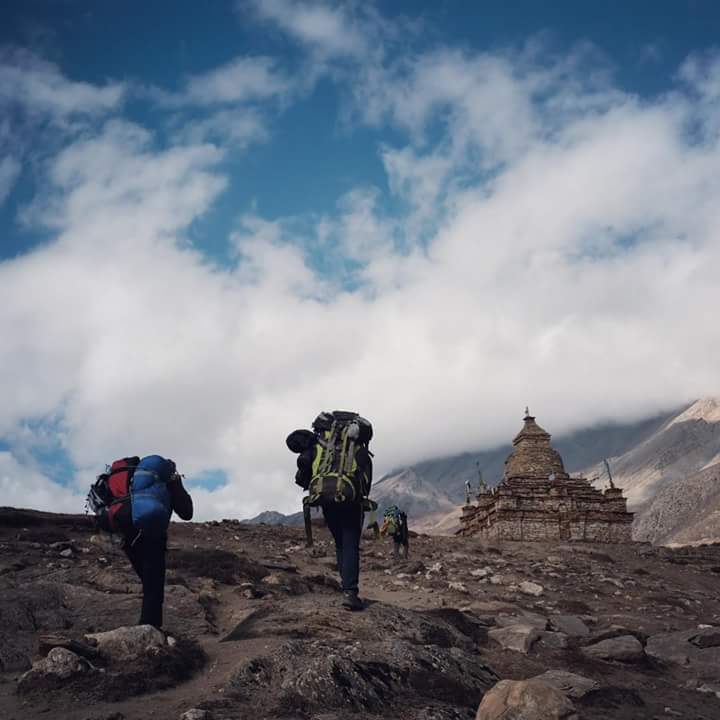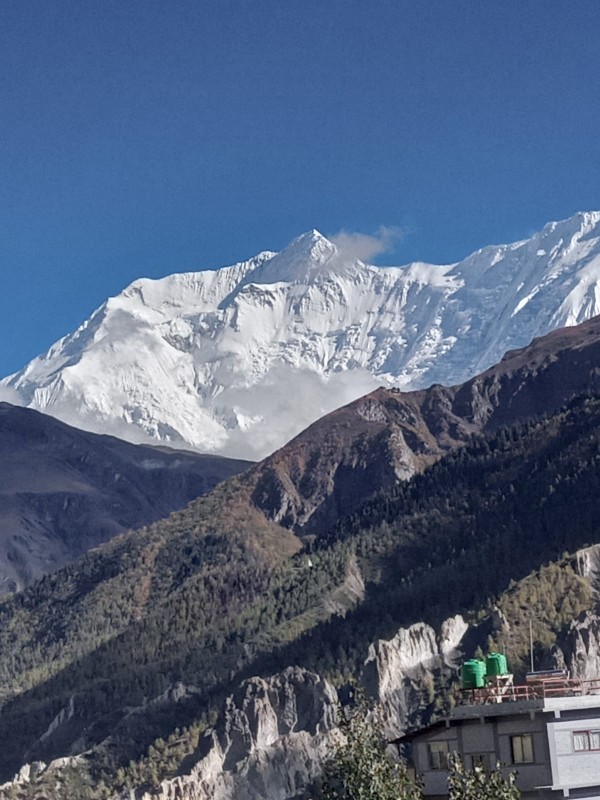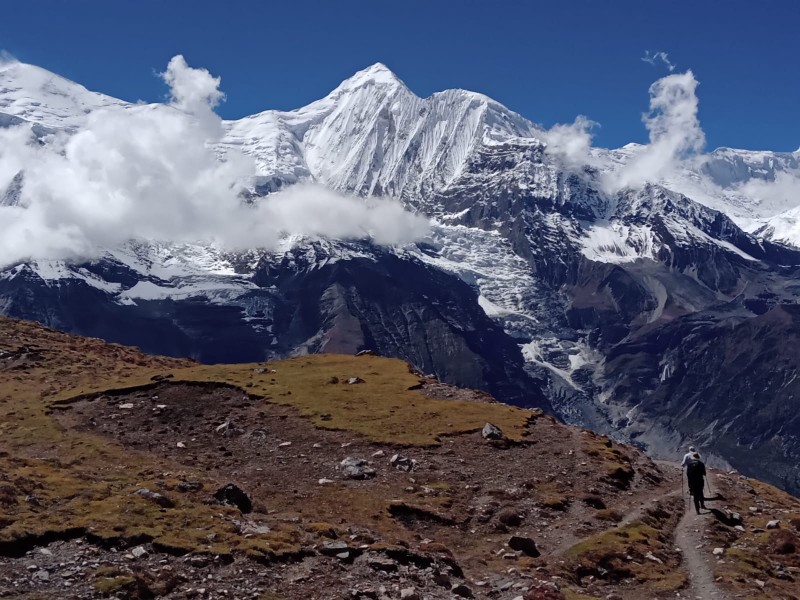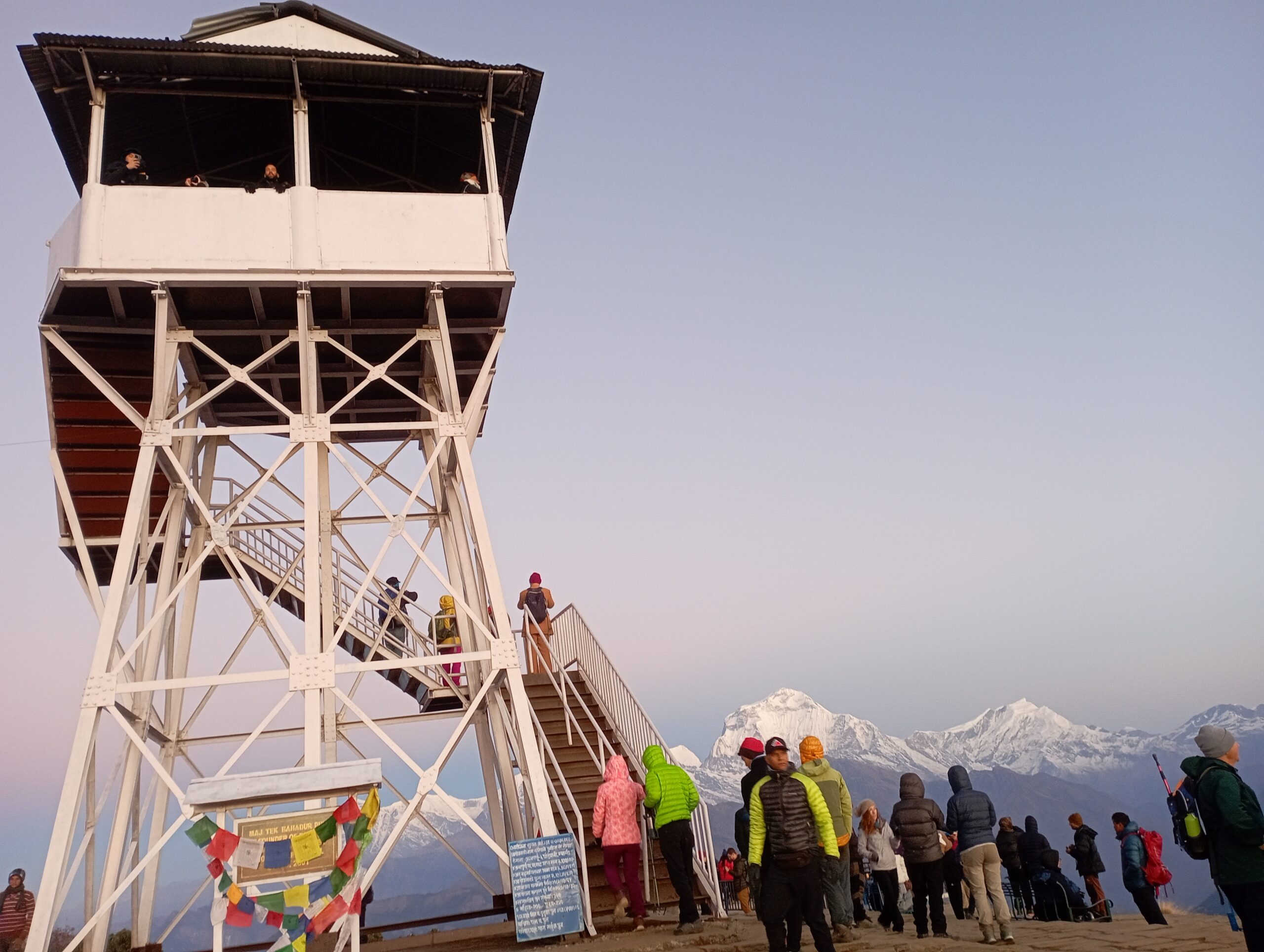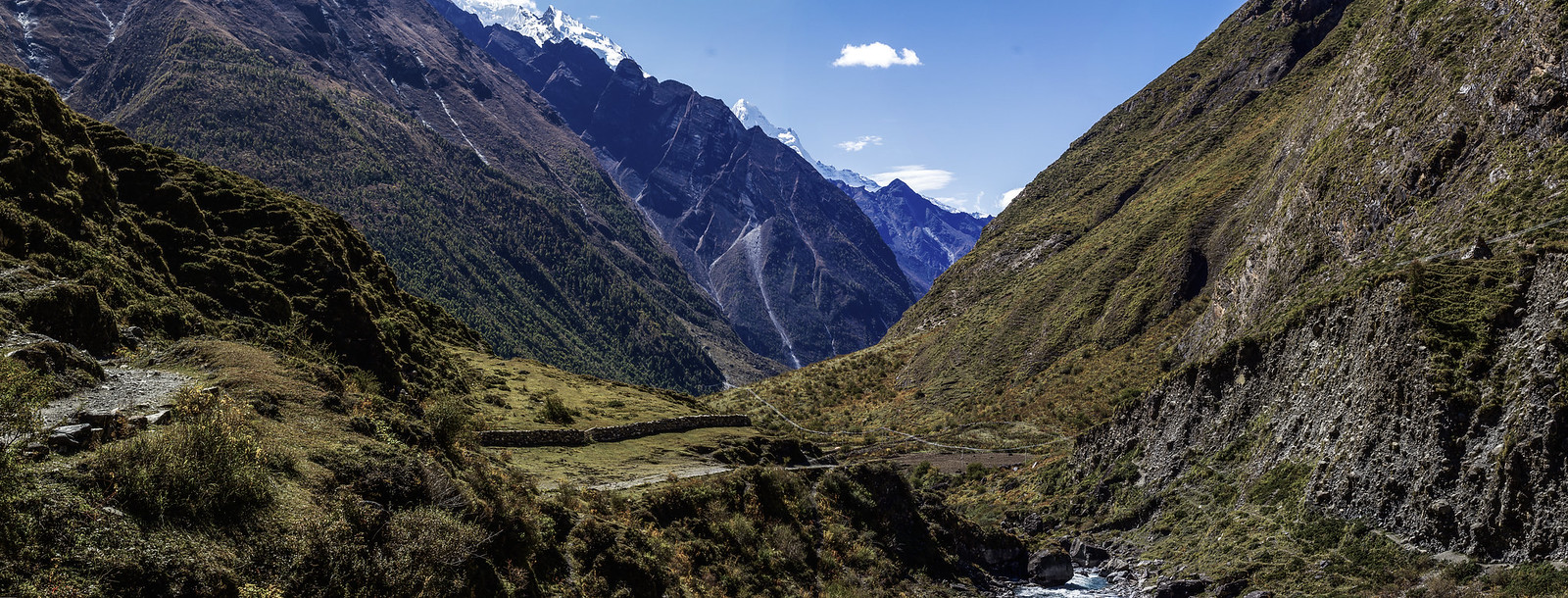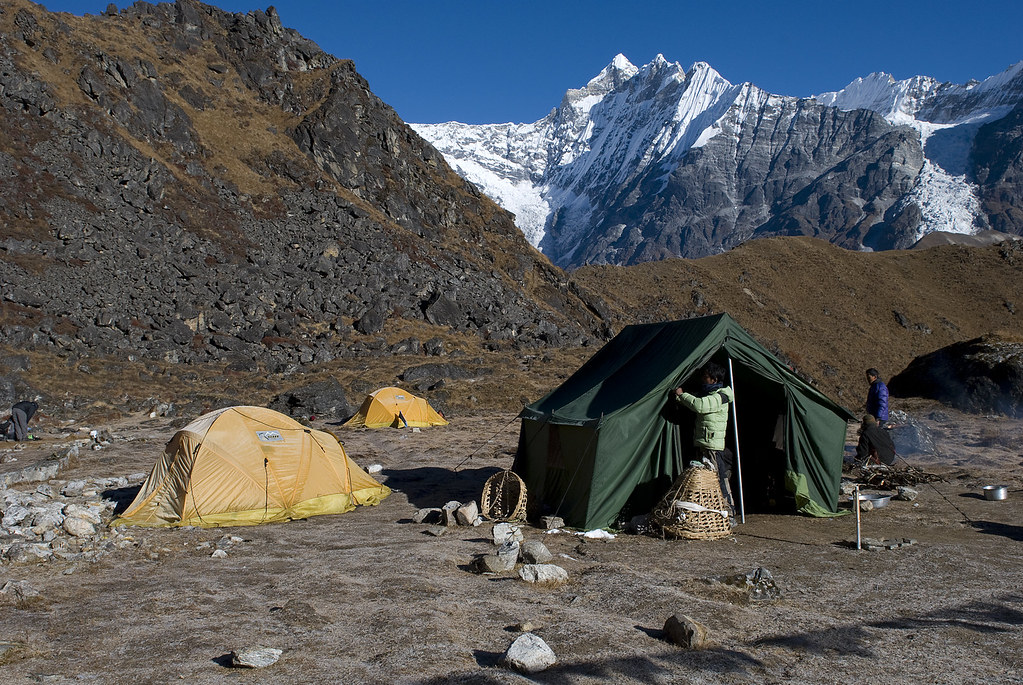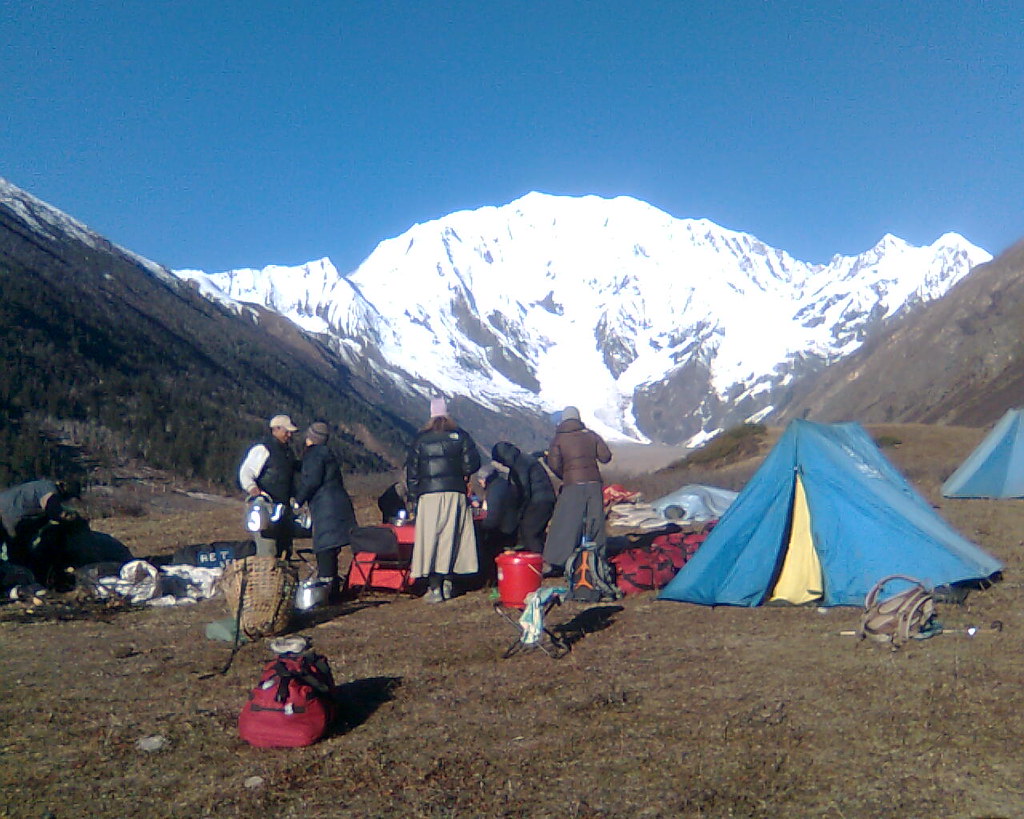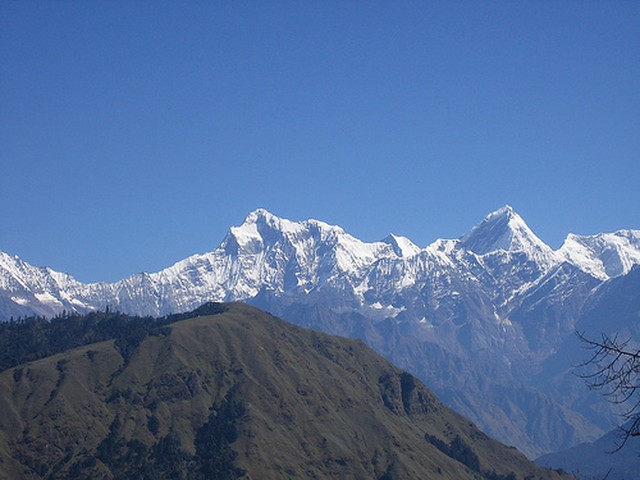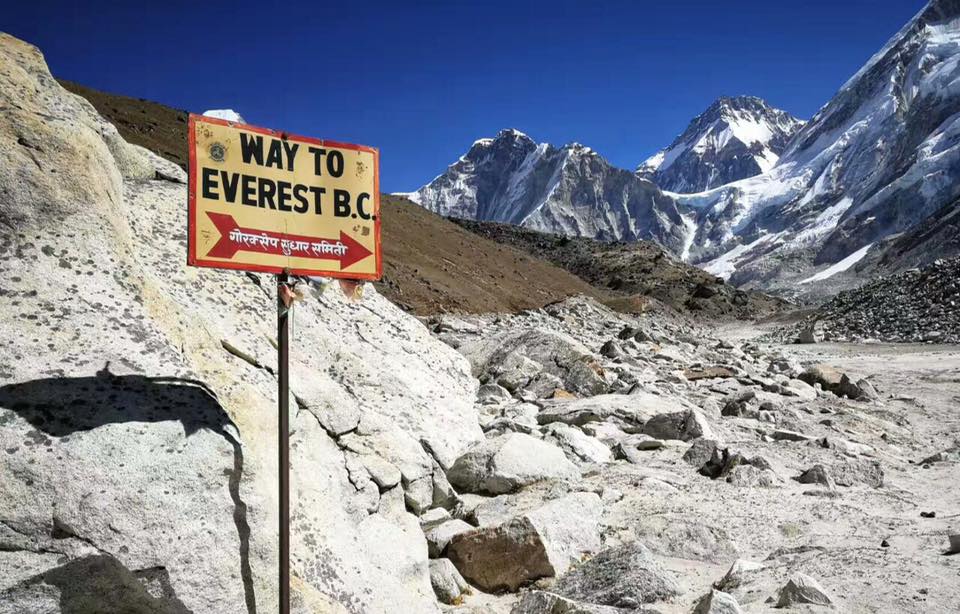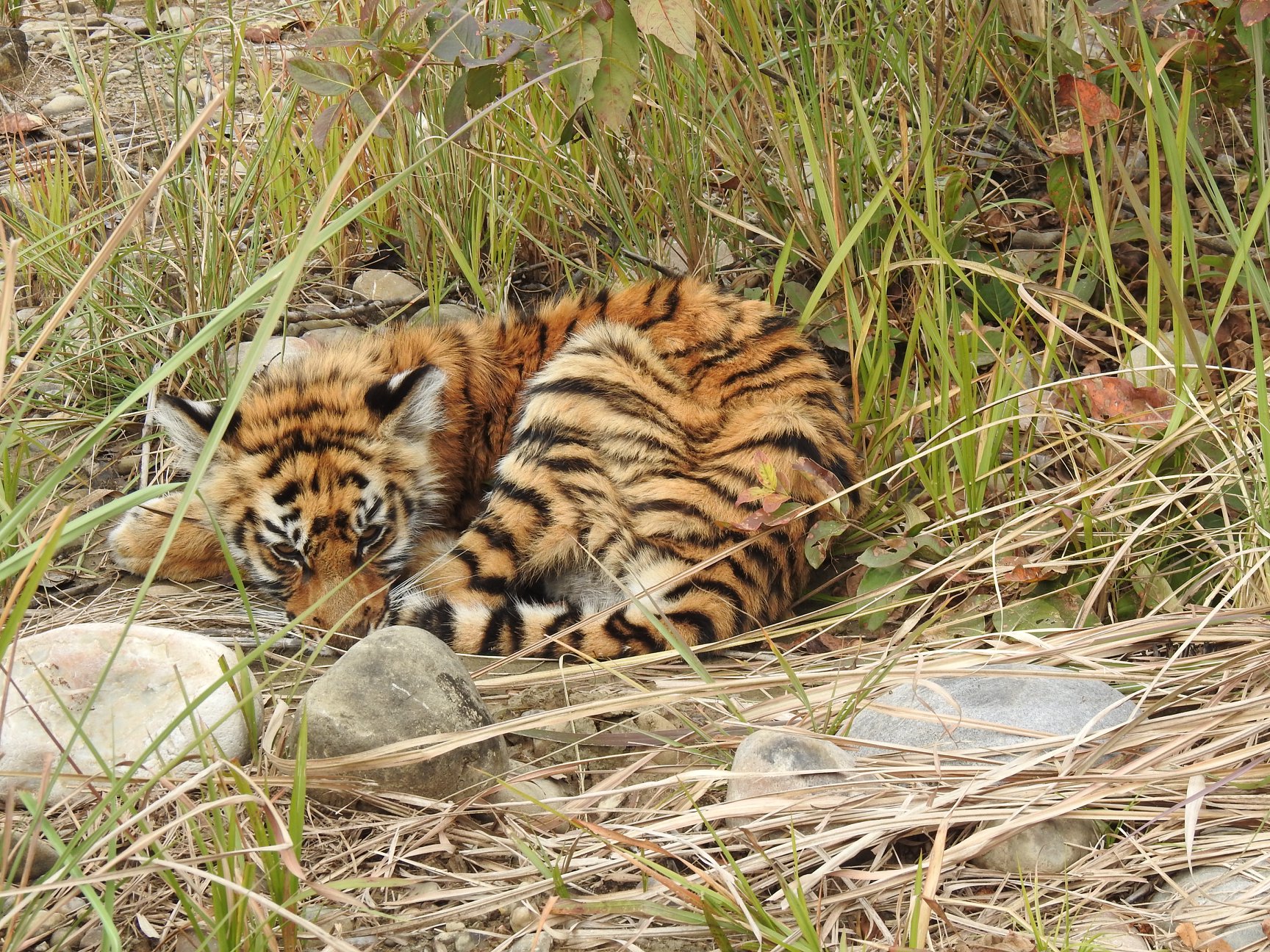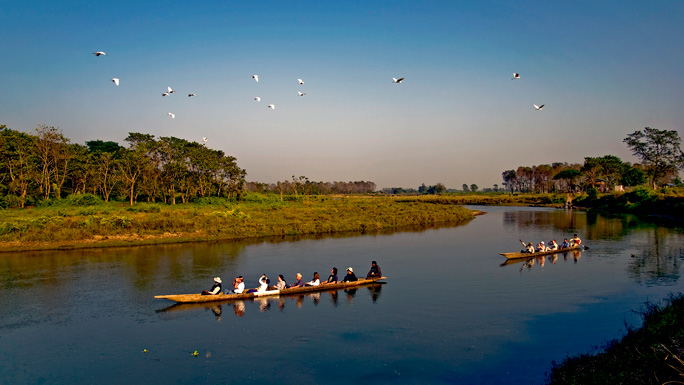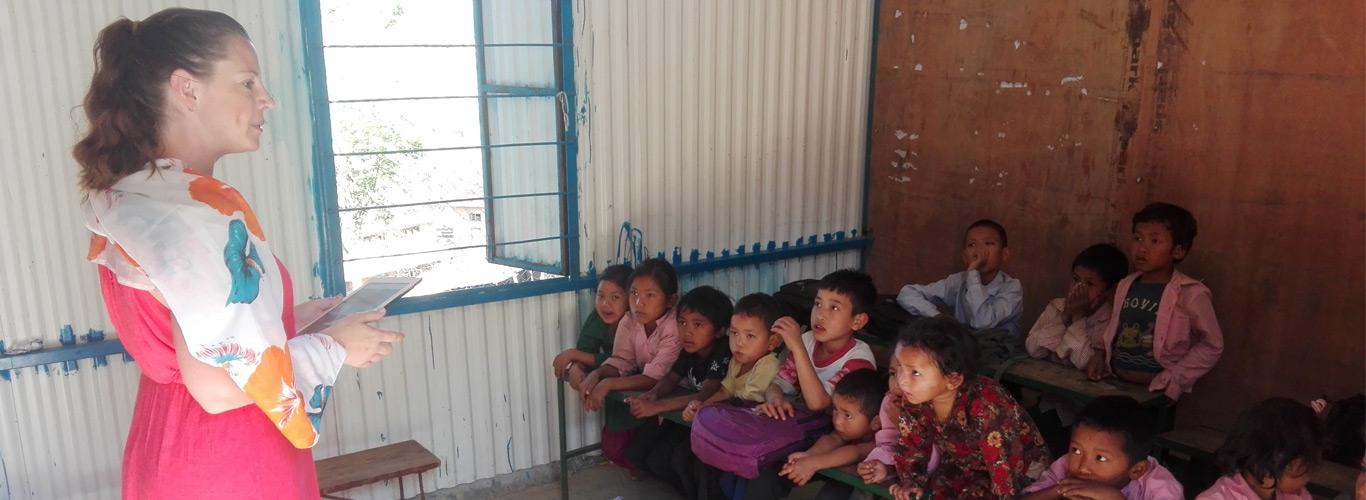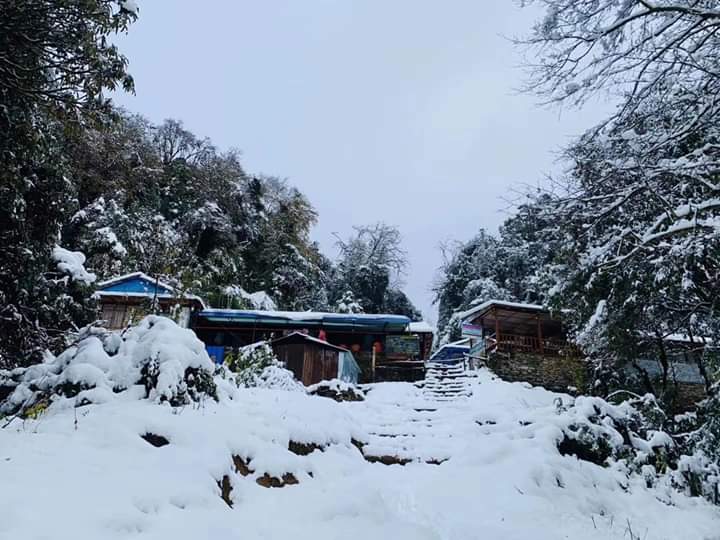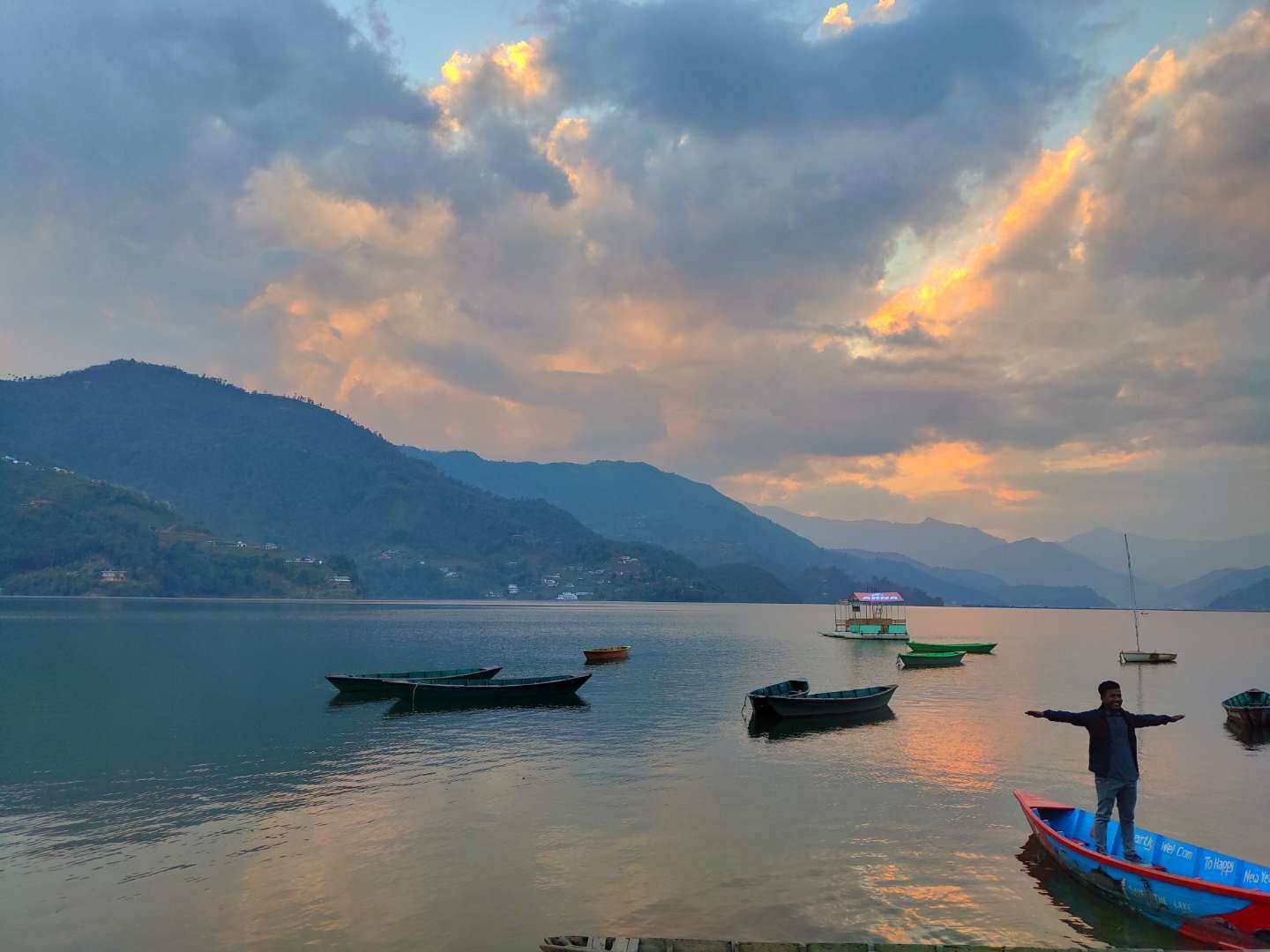Annapurna Circuit with Nar Phu Trek
Nar Phu valley trek is an off the beaten trail taking you to the enthralling and exotic valley of Nar Phu. Nar Phu combined with the Annapurna circuit is a popular trekking route in Nepal. This trek offers you medieval Tibetan culture, blissful mountain scenery, and stunning alpine views. The valley of Naar Phu also introduces you to a unique landscape in the Annapurna Region. Nar Phu valley trek combines two remote villages called Nar and Phu in Manang district. It is a seldom traveled trail newly opened with an exclusive combination of glaciers, peaks, narrow trails, remote villages and many more. Trekking through these lively villages makes you feel the real harmony among people. Locals offer you the best hospitality that will light up your trip. This trek needs a special restricted area permit from the Government of Nepal.
This adventurous trek initializes from Jagat and continues with the entry to the restricted areas of Koto, Meta, Phu, Nar, and Ngawal. It then joins the Annapurna circuit and to Ngawal via Kang La Pass (5322 m). Continuing the circuit we will complete it by reaching Jomsom via the Thorong La Pass (5416m). Thorong La Pass is the highest mountain pass in Nepal. Besides that, the trek offers you some amazing waterfalls, rocky ridges, free-flowing rivers, lush meadows, and narrow trails, throughout the routes. Along the trek, you can explore the ancient Buddhist Monastery named Tashi Lhakhang Monastery listed among the World’s great Monasteries. The Muktinath Temple is another famous temple of Hindus and Buddhists which reflects a perfect example of our religious tolerance. Exploring such religious sites will help you to understand the culture and traditions of this region. For those who want to witness and explore the high, glorious mountain range with the off-beaten track, the Annapurna circuit with Nar Phu Valley trek might just be what you are looking for. Be there for this adventure of a lifetime in this pristine trek of Annapurna.
Day 01: Arrival in Kathmandu
Day 02: Permits Procedure and world heritage sites Sightseeing ( 4 – 6 hrs)
Day 03: Drive to Dharapani by Jeep. 1,300 m, 7-8 hour drive
Day 04: Trek from Dharapani to Koto 2600m (5/6 hours)
Day 05: Trek from Koto to Meta 3570m (6/7 hours) (Nar-Phu Valley Restricted Area Permit Entry)
Day 06: Trek from Meta to Phu 3900m (6/7 hours)
Day 07: Exploration Day
Day 08: Trek from Phu to Nar 4100m (6/7 hours)
Day 09: Trek from Nar to Kang-La 5322m to Ngawal 3660m (6/7 hours) (Nar-Phu Valley Restricted Area Permit Exit)
Day 10: Trek from Ngawal to Manang 3540m (3/4 hours)
Day 11: Trek from Manang to Yak Kharka 4018m (4/5 hours)
Day 12: Trek from Yak Kharka to Thorong Phedi 4450m (4/5 hours)
Day 13: Trek from Thorong Phedi to Thorong-La Pass 5416m to Muktinath 3800m (7/8 hours)
Day 14: Trek from Muktinath to Jomsom 2710m (4/5 hours)
Day 15: Fly To Pokhara (25 Minute)
Day 16: Drive Back to Kathmandu By Tourist Bus
Day 17: Departure Day
Day 01: Arrival in Kathmandu:
As you landed in the Kathmandu airport, you’ll meet a representative from Himalayan Sanctuary Adventure. Enjoy the authentic Nepali welcome with a colorful garland of flowers. You will then head towards your hotel located in Thamel. After some rest, we will meet up for a short introduction and consult about the trek. Overnight at a hotel in Kathmandu.
Day 02: Permits Procedure and Sightseeing Kathmandu Valley (4- 6hrs)
Today we will prepare for the trip after getting the necessary permits for the trek. After finishing the preparation, you can explore the World Heritage sites of Kathmandu Valley. We will visit Pashupatinath Temple, one of the most beautiful and important shrines of Lord Shiva in the entire of Asia. The famous “Monkey Temple ” Swayambhunath, a huge Buddhist shrine Boudhanath Stupa and the historic Darbar Square. We will head back to the hotel to complete the tour. Overnight in Kathmandu.
Include Meals: Breakfast
Day 03: Drive to Dharapani (1300m) 7-8hrs
The early drive begins by Jeep from Kathmandu to Dharapani through Prithvi Highway. We drive through Dumre to Besishar (entry point of Annapurna circuit) to Bhulbule (VDC in Lamjung District) toward Bahundanda to reach Dharapani. Passing across an awesome bung waterfall, narrow streams, suspension bridges, potato and barley fields, and rivers with tea houses towards Dharapani. Overnight in Dharapani.
Include Meals: Breakfast, Dinner, and Lunch
Day 04: Trek from Dharapani to Koto (2600m) 5-6hrs
We start our trek in the early morning and head out to Koto. This walk takes about 6-7 hours. As the altitude rises, you will notice a gentle soft breeze with vegetation change. Along the way, the first village we’ll pass is Bagarchhap. Bagarchap is a small village showcasing traditional Tibetan architecture and culture. You can enjoy the stunning view of Manaslu (8156m) and Peak 29 (7871m) on the way to Timang through Danakyu. Continue to pass some other villages and trek along rocky trails till to reach Koto. Koto offers you a majestic view of the Annapurna range. Overnight at lodge/teahouse in Koto.
Include Meals: Breakfast, Dinner, and Lunch
Day 05: Trek from Koto to Meta (3900m) 6-7hrs (Nar Phu Valley Restricted Area Permit Entry)
Trek starts entering the restricted area and continues our trek beside Nar Khola. The trail heads through a big pine forest next. From here, we will cross another suspension bridge to reach Dharmasala. You will come across a mesmerizing waterfall on the way to Meta. Meta used to be a place for grazing cattle and temporary animal sheds. Now it has transformed into a small village only after the operation of the Nar Phu trekking route. Overnight at a teahouse in Meta.
Include Meals: Breakfast, Dinner, and Lunch
Day 06: Trek from Meta to Phu (3900m) 6-7hrs
Our trek starts ahead of Phu today. On this route, we witness less vegetation and a rugged trail. The scenery is more detailed with high hills and streams leading our way. The trail is fairly easy to Chyakhu crossing the suspension bridge toward Kyang. After leaving Kyang, come across some rocky trails toward Phu village. a small settlement of Phu village where you may encounter Himalayan Blue Sheep grazing in the plain field. You can also visit the last monastery built by Karmapa Rinpoche called Tashi Lhakhang Monastery. Overnight at lodge in Phu.
Include Meals: Breakfast, Dinner, and Lunch
Day 07: Exploration Day
We will rest and explore the beautiful village of Phu Today. You will notice the cultural richness as well as the devotion to religious practices. The main ethnic group of people living in Phu is the Lataten, Wangchangtan, and, Wajaten translated as Lama, Gurung, and Ghale respectively. Head out to Tashi Lhakhang Monastery is one of the most significant Monasteries around the world. The Monastery provides both traditional and modern health facilities started by the former head monk, Karmapa Rinpoche. Apart from exploration, the valley offers great scenery of mountains and snow-capped peaks in the region. Overnight at lodge in Phu.
Include Meals: Breakfast, Dinner, and Lunch
Day 08: Trek from Phu to Nar (4100m) 6-7hrs
Trek starts early from Phu descending by multiple streams and suspension bridges. Next, we will pass an abundant Himalayan forest to reach Mahendra Pul. The route leads us through the gully of Labse River before descending to Nar. You will also witness the wonderful village of Yughat and many Buddhist stupas and monasteries along the way to Nar. Based on population and houses, Nar is around twice the size of Phu. Maybe due to its proximity to Koto, it had more facilities than Phu. Festivals where people dance as monks, a festival called “Dorje” where people shoot arrows, and “Yartung” where people ride horses (Ghode Jatra). Overnight at lodge in Nar.
Include Meals: Breakfast, Dinner, and Lunch
Day 09: Trek from Nar to Kang-La (5322m) to Ngawal (3600m) 6-7hrs (Nar Phu Valley Restricted Area Permit Exit)
The day kicks off with ascending uphill to Jhombhu Kharkha aka Kang-La. It offers magnificent scenery of the Annapurna and Dhaulagiri range and another massif. As the altitude increases, vegetation lessened, and the landscape around will be different and much pure. Marched through rocky hills, mountains were nearby. There are two lakes before reaching the pass around 5000m above. After enjoying the panorama of the Himalayas, we head downhill to Ngawal. Overnight at lodge in Ngawal.
Include Meals: Breakfast, Dinner, and Lunch
Day 10: Trek from Ngawal to Manang (3540m) 3-4hrs
Our Trek starts downhill exploring some monasteries along the way to Braga. We trek for an hour to reach the valley of Manang from Braga. Then we ascend to Chhunker’s viewpoint offers a magnificent scene of Gangapurna Lake (3500m), Tilicho Peak (7130m), and the other Himalayas. Adding up by exploring the Cave, Gompa along the way to Manang. Overnight at lodge in Manage.
Include Meals: Breakfast, Dinner, and Lunch
Day 11: Trek from Manang to Yak Kharkha (4018m) 4-5hrs
We will continue to ascend for an hour which offers a beautiful view of Annapurna II, Tilicho, and Gangapurna with a closeup scene of Chuli Peak. March towards the barren windy landscape with juniper bushes alongside the route. Finally, we will reach a small settlement of a village called Yak Kharka. In the evening you can explore Yak Kharka with some gentle hikes. Overnight at a homestay in Thorong Phedi.
Include Meals: Breakfast, Dinner, and Lunch
Day 12: Trek from Yak Kharkha to Thorong Phedi 4500m (4-5hrs)
The route from Yak Kharka leads slowly ascend to reach Ledar. The route ends up offering the granda view of the Gangapurna, Annapurna II, and a close view of Chuli peakPeak. You have to ascend along the barren windswept terrain before reaching up to Thorong Phedi. The consequent destination before reaching the trekking summit at Thorong La. Overnight at a homestay in Thorong Phedi.
Include Meals: Breakfast, Dinner, and Lunch
Day 13: Trek from Thorong Phedi to Thorong-La Pass (5410m) to Muktinath (3800m) 7-8hrs
Trek starts with a steep climb to reach Thorong High Camp. A challenging trail leads to one of the highest and most beautiful mountain passes in Nepal, Thorong La Pass. We view the attractive panorama of the Himalayas from the pass and the route descends until we reach Chabarbu. Continue trekking from Chabarbu for a couple of hours to reach the holiest place for both Hindus and Buddhists, Muktinath. We will explore the Muktinath temple with the pilgrims and devotees in the evening. Overnight at a lodge, Muktinath.
Include Meals: Breakfast, Dinner, and Lunch
Day 14: Trek from Muktinath to Jomsom (2701m) 4-5hrs
Early in the morning, we take a short visit to take a shower in 108 flumes. Locals believe that this visit is here to cleanse all our sins. Then we trek ascend exploring the stunning beauty of Nilgiri mountain (7061m) and the Dhaulagiri peak till we reach Jharkot. We will continue the walk till we reach Jomsom village. Overnight at a lodge in Jomsom.
Include Meals: Breakfast, Dinner, and Lunch
Day 15: Fly to Pokhara (25min)
Catch a morning flight from Jomsom to Pokhara. The flight is short but scenic flying up the hills with fantastic mountains-views. After landing at the airport, we’ll take you to your hotel in Pokhara. You can explore some attractive places, lakes, and caves in Pokhara City. Also, try some Thakali and Nepali cuisine while you are here. Overnight at a hotel in Pokhara.
Include Meals: Breakfast, Dinner, and Lunch
Day 16: Drive back to Kathmandu
Catch an early morning bus from Pokhara which will take almost 6-7 hours to reach Kathmandu. You can enjoy the scenic drive along the way. Our driver will pick you up from the bus park to the respective hotel. In the evening, we will have a farewell dinner together and share our experiences and your feedback. Overnight at Thamel, Kathmandu.
Include Meals: Breakfast
Day 17: Final Departure
You can visit the Thamel markets near the hotel in your spare time. Later one of our representatives from Himalayan Sanctuary Adventure will escort you to the Tribhuvan International Airport for the final departure.
What’s Included
- Airport Transportation
- 3 Star Category Hotel in Kathmandu and Pokhara including breakfast.
- Teahouse/Lodge accommodation including Breakfast, Lunch, and Dinner during the trek
- All the Permit and Company necessary paper works
- Transportation from Kathmandu to Dharapani by private Local Bus/Car/ Jeep as per group size
- Trekking Guide: An experienced, helpful, friendly, and English-, speaking Trekking guide with their Salary, Food, Drinks, Accommodation, Transportation and Insurance.
- Trekking porter: A porter carries your luggage. (One porter for every 2 members, the maximum load is 20 Kg)
- Jomsom to Pokhara flight ticket
- Pokhara to Kathmandu Transportation by Tourist Bus
- Arrangement of emergency helicopter service which will be paid by your Travel insurance company.
- All government taxes.
What’s Excluded
- Nepal entry visa fee (you may easily issue the visa upon your arrival at Tribhuvan International Airport Kathmandu).
- Travel insurance.
- Emergency rescue evacuation
- Lunch Dinner in Kathmandu and Pokhara
- All the bar bills like coke, beer, a bottle of water, hot water, bottled water, Wi-Fi, phone, hot shower, etc. International airfare
- Overnight Charge
- Tips for the guide and porter.
Our main paramount is to offer a safe and enjoyable trek for your clients. Experienced trekkers will often take only a selection of these items based on what has worked in the past. The following gives you a general idea of the personal items that you need to bring for the trek. The personal items are of individual interest and choice. The most important fact that one should keep in mind is that one should have enough clothes to tackle the cold weather in the Himalayas.
Upper Body – Head / Ears / Eyes
- Sun hat (We provide you a complimentary sunhat)
- Wool or synthetic hat that covers the ears
- Sunglasses with UV protection
- Headlamp
- Neck warmer
Hand
- Liner gloves
- Heavier shell gloves
Core Body
- T-shirts (2)
- Lightweight expedition thermal tops
- Fleece jacket or pullover
- Water/windproof shell jacket (Preferably breathable fabric)
- Synthetic sports bras (for women)
Lower Body – Legs
- Lightweight expedition thermal bottoms
- Nylon hiking shorts
- Soft shell and hard shell trekking pants
- Water/windproof trousers
- Casual pants
Feet
- Liner socks
- Heavyweight socks
- Waterproof hiking/trekking boots
- Light shoes/sneakers
- Gaiters (For monsoon and winter)
Other essential important items
- Passport and extra passport photos (2 copies)
- Airline tickets (Please make a copy and leave one at our office in KTM just in case you need to change the date of yours)
- Durable wallet/pouch for travel documents, money & passport
- Water bottle/bladder
- Water purification Iodine tablets
- Toiletries (Include toilet paper, wet wipes, and liquid hand sanitizer, towel, soap)
Medicines and First Aid Kit
- Extra Strength Excedrin for altitude-related headaches
- Ibuprofen for general aches and pains
- Immodium or Pepto bismol capsules for upset stomach or diarrhea
- Diamox (commonly prescribed as Acetazolamide) 125 or 250mg tablets for altitude sickness
- Anti-infection ointments
- Band-aids
- Lip balm (At least SPF 20)
- Sunscreen (SPF 40)
Optional
- Adjustable trekking poles
- Favorite snacks (No more than 2 pounds)
- Paperback books, cards, mp3 player.
- Binoculars
- Cameras (Memory cards, chargers, and batteries)
- Pee bottle for man and pee funnel for woman
Note: This equipment list is only a guide. You need to bring the listed items, however, you can choose from your preferred brands using your expertise. You can also shop the trekking equipment and clothing at a reasonable price at stores in Thamel, Kathmandu.
Will somebody come to pick me up at the airport upon my arrival?
Yes, Our representative from Himalayan Sanctuary Adventure will be waiting for you outside the airport terminal. Upon arrival, you will be transferred to your hotel overnight in Kathmandu.
Can I obtain a visa for Nepal on arrival at the airport?
YES, you can obtain the visa easily upon your arrival at Tribhuvan International Airport in Kathmandu (Tourist Visa with Multiple Entries for 15 days can be obtained by paying USD 30 or equivalent foreign currency. Similarly, a Tourist Visa with Multiple Entries for 30 days and 90 days can be obtained by paying USD 50 and 125 respectively. Please bring 2 copies of passport-size photos.)
Can I use credit cards in the places I visit in trekking?
Once you are out of the cities, all you need is cash. Please change the currency to local Nepali Rupees before you go to the mountains.
I am a Vegetarian, is that a Problem?
No problem at all because mostly, the lodges serve vegetarian meals. We always recommend our clients eat vegetarian meals to avoid food poisoning, eating heavy meals and non-vegetarian meals at high altitudes is not safe for the stomach.
Do I need to bring toilet paper for the trek?
Almost all the guest houses sell toilet paper so you can buy it there. Hand sanitizer and a towel you must bring your own.
Where do we go to the toilet along the trail?
In most cases, you can use the toilet provided by the tea houses/lodges on the trail but normally in case of emergency, you just do the toilet along the trail wherever you find privacy.
What sort of accommodation can I expect in Kathmandu, Pokhara, and trekking?
We use standard rooms at 2-star category hotels in Kathmandu and Pokhara with breakfast. Along the trekking routes, Teahouses/lodges generally provide basic clean facilities with a mattress and a quilt or blanket. The lodges in trekking routes usually provide single and double rooms, or occasionally a dormitory style. At times when possible, dining will be around a bonfire. In teahouses, food will be prepared in the kitchen, which you should not enter without permission. The toilet in teahouses provides essential and basic facilities and is always outside the room.
What is the drinking water facility in the mountain?
Bottled water is easily available at the lodges and teahouses, which you can buy at the cost of USD 1 at lower elevations up to USD 4 to higher elevations per liter.
If you are planning to drink normal water during trek, purifying water with any sort of purification tablets or drops is a must. You can bring your purifier or can purchase it in Kathmandu.
How much additional money do I need per day?
It depends on your spending habits. Generally, in Kathmandu and Pokhara, you can allocate USD 10 to USD 15 for lunch and dinner. USD 10 to USD 15 per person a day will be enough to buy bottles of water, and chocolates, pay for the hot shower, and a few drinks during the trekking.
What is the weather & temperature like in trekking?
One of the most unpredictable elements of the mountain is the weather. If you’re not properly prepared for the twists, turns, and, volatility of the conditions that can occur in this breathtaking region, you might find yourself in an uncomfortable and unpleasant situation.
Spring – March / April / May / June
During springtime, the average temperature is 20 degrees C (68 Degrees F), with a maximum of 25 degrees C (77 Degrees F), during sunny days and a minimum of 0 degrees C (32 Degrees F), in the morning and at night for areas above 2500 meters.
July / August Through Mid- September is Monsoon Season
This season is not recommended to travel as it rains in the lower altitudes. There are positive sides to trekking during the monsoon months as the excess rainfall can provide ample chance to see spectacular views of the waterfall and it’s also the best season to avoid the crowds.
During this time, the average temperature is 25 degrees C (77 Degrees F), with a maximum of 30 degrees C (86 Degrees F), during sunny days and a minimum of 5 degrees C (41 Degrees F), in the morning and at night for areas above 2500 meters.
Autumn – End of September / October / November
The average temperature during the fall is 20 degrees C (68 Degrees F), with a maximum temp of 25 degrees C (77 Degrees F), during sunny days and a minimum of -5 degrees C (23 Degrees F), in the morning and at night, for areas above 2500 meters altitude.
Winter- December/ January/ February
Winter starts from mid December till mid-February in this region. The average temperature during the winter is 10 degrees C (50 Degrees F), with a maximum temp of 17 degrees C (62.6 Degrees F), during sunny days and a minimum of -10 degrees C (14 Degrees F), in the morning and night, for areas above 2500 meters altitude.
The above temperature is based on the outside of the guesthouse temperature. No need to worry about the cold temperature as we provide the sleeping bag plus the extra blanket to make sure our clients are warm enough during their time of need.
What is the temperature rating of the sleeping bag that you lend to trekkers?
The temperature rating of the sleeping bags we provide is about -10 degrees C (14 Degrees Fahrenheit), our guide can provide a linear or extra blanket from the lodge in the mountain if the sleeping bag is not warm enough for you.
Do your guides have trekking guide certificates from the Hotel Management and Tourism Center? Have they received first aid training for high altitude?
Yes, they have all received a 45-day training from the Hotel Management and Tourism Center in Nepal. The guides have also received high-altitude first aid training from KEEP (Kathmandu Environmental Education Project)
What immunizations will I need?
You don’t need to submit any immunization documents to enter Nepal however if you have been immunized with diphtheria TB, hepatitis A, hepatitis B, malaria, typhoid, polio, and tetanus then that is a plus point but it’s not mandatory. We also recommend: A dental check-up before travelling. You know your blood group in case of emergency
If I am sick can I continue the trek the next day after a day’s rest?
It depends on level the of your sickness. Once you are sick at higher altitude you need to rest at a lower altitude and you at least need 3 days to a week for recovery.
If you are on private or solo trip you can discuss and decide with a guide depending on your health status.
If you were in-group then this option would be limited so please make sure you discuss with a guide and catch up with the group later on.
Is there any communication while we are on trekking?
There are telephones in some villages along the trekking routes. Our guides are equipped with the local mobile phone. They carry the Nepal Telecom and Ncell Sim that has good network coverage.
Can I charge my digital camera or other equipment on my trip?
These facilities will be available in most of the places in your hotel reception by paying some service charges. Remember to bring TWO and THREE-pin travel adapters! You can also buy the adapters in the supermarket or electronic shops in Kathmandu. Our guide can help you with it.
Do you use yaks/porters on the trek or do we carry all of our gear ?
While on the trek, our porter will take care of your luggage. All you need to carry is your small day bag for your personal belongings like a camera, water bottle, sun cream, etc.
Will there be a place to store items/clothing not required for the trek?
The hotel in Kathmandu does provide free storage services. So you can leave all your items that are not required for the trekking at your hotel.
Do I need to tip my guide and porters? How much would that be?
This is a difficult thing to gauge. We have seen everything from USD 20 to USD 100 per person for guides and porters. Tipping is not required, but a small gesture of thanks to your guides and local porters. The level of the tip should reflect the level of satisfaction from and personal involvement with your guide. However, we recommend you spend a minimum of 10% of your total trip cost for tipping the entire local staff.
| Start Date | End Date | Price in USD | Availability | Booking | Note |
|---|
Avabillity Options
OPEN: This date is available and open for bookings. Go for it!
GUARANTEED: Guaranteed departure. Seat Available.
LIMITED: Guaranteed departure, Limited seat. You can send booking request for availability.
FULL:This date is currently unavailable. Please contact us if you are interested in traveling on this date.

